Satellite
From Signal Identification Wiki
Click the name of a signal to see more detailed information, possible decoding, and additional sound and waterfall samples
| Inactive (No longer in use) |
Active (Currently in active use) |
Status Unknown or Intermittent |
| Signal Name | Description | Frequency | Mode | Modulation | Bandwidth | Location | Sample Audio | Waterfall image |
|---|---|---|---|---|---|---|---|---|
| AIST 2D | Aist 2D is a Russian microsatellite developed and designed by a group of Samara Aerospace University students, postgraduates, and scientists in cooperation with TsSKB-Progress. | 435.315 MHzMegaHertz (MHz) 10^6 Hz | NFMNarrowband Frequency Modulation | PM/PCM | 10 kHzKiloHertz (kHz) 10^3 Hz | Worldwide | 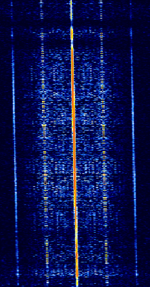 |
|
| AMSAT-P3D | AMSAT-P3D (Known as Phase 3D, OSCAR-40, and AO-40) is a amateur radio satellite built by AMSAT. As of 2004, the satellite's systems have failed. | 145.805 MHzMegaHertz (MHz) 10^6 Hz — 24,048.285 MHzMegaHertz (MHz) 10^6 Hz | USBUpper Side Band Modulation (Radio, referring to reception and modulation mode)Universal Serial Bus (Computer, referring to USB Ports and cables) | PSKPhase-Shift Keying | 1.6 kHzKiloHertz (kHz) 10^3 Hz | Worldwide | 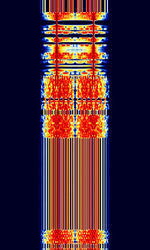 |
|
| ARGOS A-DCS | Some polar weather satellites from the METOP and POES series carry ARGOS A-DCS (Advanced Data Collection System), which is a system to collect data from sondes and other remote land or air-based instrumentation. | 465.99 MHzMegaHertz (MHz) 10^6 Hz | USBUpper Side Band Modulation (Radio, referring to reception and modulation mode)Universal Serial Bus (Computer, referring to USB Ports and cables) | PSKPhase-Shift Keying | 54 kHzKiloHertz (kHz) 10^3 Hz | Worldwide | 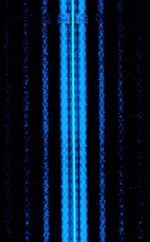 |
|
| Aprizesat | Data downlink from Aprizesat microsatellites. Aprizesat constellation consists of 12 Active satellites, These provide a worldwide M2M asset tracking service and relay AIS packets. | 400.5 MHzMegaHertz (MHz) 10^6 Hz — 400.65 MHzMegaHertz (MHz) 10^6 Hz | USBUpper Side Band Modulation (Radio, referring to reception and modulation mode)Universal Serial Bus (Computer, referring to USB Ports and cables) | GMSKGaussian Minimum-Shift Keying | 5 kHzKiloHertz (kHz) 10^3 Hz | Worldwide | 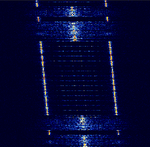 |
|
| Aqua Direct Broadcast (DB) | A direct broadcast sent in the X band by the NASA Aqua satellite for reception by end users. | 8,160 MHzMegaHertz (MHz) 10^6 Hz | RAW | OQPSK | 15 MHzMegaHertz (MHz) 10^6 Hz | Worldwide | — | 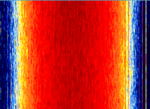 |
| Automatic Picture Transmission (APT) | Automatic Picture Transmission (APT), also known as NOAA-GEOSAT, was an analog image transmission mode used by the NOAA weather satellites and some Russian weather satellites to transmit satellite weather photos. As of august 2025, most of the NOAA sats that transmitted this mode have been decommissioned, and have discontinued transmission. | 137.1 MHzMegaHertz (MHz) 10^6 Hz — 137.913 MHzMegaHertz (MHz) 10^6 Hz | AMAmplitude Modulation, FMFrequency Modulation | AMAmplitude Modulation, FMFrequency Modulation | 34 kHzKiloHertz (kHz) 10^3 Hz | Worldwide | 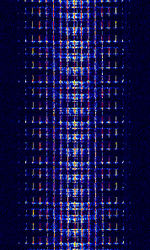 |
|
| BlueWalker-3 Wideband Telemetry | Wideband telemetry signal from BlueWalker-3 experimental satellite. | 2,245 MHzMegaHertz (MHz) 10^6 Hz | RAW | BPSKBinary Phase-Shift Keying (1 bit per symbol) | 1 MHzMegaHertz (MHz) 10^6 Hz | Worldwide | — | 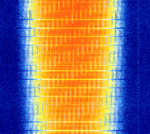 |
| Broadband Global Area Network (BGAN) | Proprietary satellite network owned and operated by Inmarsat that provides cellular 3G equivalent data and voice services to subscribers. | 1,525 MHzMegaHertz (MHz) 10^6 Hz — 1,559 MHzMegaHertz (MHz) 10^6 Hz | WFMWideband Frequency Modulation | QPSKQuadrature Phase-Shift Keying (2 bits per symbol) | 200 kHzKiloHertz (kHz) 10^3 Hz | Worldwide | 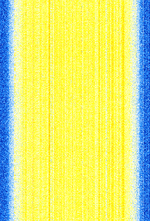 |
|
| CAS-4A/B Satellite Telemetry | CAS-4A/B Satellite 4.8 kbpsKilobits per second (kbps) GMSKGaussian Minimum-Shift Keying Telemetry Downlink. | 145.835 MHzMegaHertz (MHz) 10^6 Hz — 145.89 MHzMegaHertz (MHz) 10^6 Hz | NFMNarrowband Frequency Modulation | GMSKGaussian Minimum-Shift Keying | 10 kHzKiloHertz (kHz) 10^3 Hz | Worldwide | 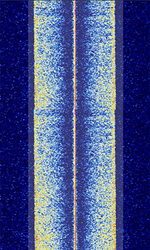 |
|
| CLOUDSAT Downlink | Dump to European ground station from the CLOUDSAT cloud profiling satellite. CLOUDSAT has a CPR (Cloud Profiling Radar) that operates at 94 GHzGigaHertz (GHz) 10^9 Hz to create a vertical sounding (cross-section) of the atmosphere. | 2,217.5 MHzMegaHertz (MHz) 10^6 Hz | RAW | BPSKBinary Phase-Shift Keying (1 bit per symbol) | 2 MHzMegaHertz (MHz) 10^6 Hz | Europe | — |  |
| CORIOLIS Tactical Direct Broadcast | Direct Broadcast digital signal from the CORIOLIS satellite, primarily carries data from the WindSat instrument. | 2,221.5 MHzMegaHertz (MHz) 10^6 Hz | RAW | BPSKBinary Phase-Shift Keying (1 bit per symbol) | 2 MHzMegaHertz (MHz) 10^6 Hz | Worldwide | — |  |
| Delfi-C3 Telemetry | Delfi-C3 Telemetry was a telemetry signal sent from the Delfi-C3 university-class satellite. | 145.87 MHzMegaHertz (MHz) 10^6 Hz | LSBLower Side Band Modulation | BPSKBinary Phase-Shift Keying (1 bit per symbol) | 10 kHzKiloHertz (kHz) 10^3 Hz | Worldwide | 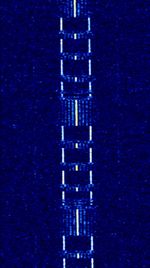 |
|
| ELEKTRO-L GGAK-E Direct Broadcast | Broadcasts the data from the GGAK-E cosmic ray detector onboard ELEKTRO-L geostationary weather satellites | 1,693 MHzMegaHertz (MHz) 10^6 Hz | DSBDual Side Band Modulation | PSKPhase-Shift Keying | 15 kHzKiloHertz (kHz) 10^3 Hz | Asia, Europe | 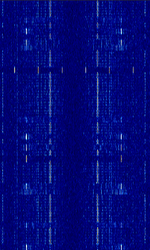 |
|
| FUNcube-1 Telemetry | FUNcube-1 Telemetry is a telemetry signal sent from the Funcube-1 Cubesat amateur radio satellite. | 145.935 MHzMegaHertz (MHz) 10^6 Hz | USBUpper Side Band Modulation (Radio, referring to reception and modulation mode)Universal Serial Bus (Computer, referring to USB Ports and cables) | PSKPhase-Shift Keying | 2 kHzKiloHertz (kHz) 10^3 Hz | Worldwide | 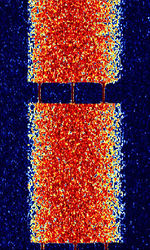 |
|
| GK-2A LRIT ( Low-Rate Image Transmission ) | LRIT (Low-Rate Image Transmission) is used to transmit images on the GK-2A satellite | 1,692.1 MHzMegaHertz (MHz) 10^6 Hz | RAW | BPSKBinary Phase-Shift Keying (1 bit per symbol) | 170 kHzKiloHertz (kHz) 10^3 Hz | Asia-Pacific | 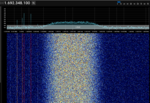 |
|
| GOES CDA Telemetry | Telemetry signal sent from GOES 16, 17 and 18. GOES is a family of Geostationary Operational Environmental Satellite operated by the United States National Oceanic and Atmospheric Administration (NOAA). | 1,693 MHzMegaHertz (MHz) 10^6 Hz | RAW | BPSKBinary Phase-Shift Keying (1 bit per symbol) | 80 kHzKiloHertz (kHz) 10^3 Hz | United States, Asia | — |  |
| GOES Data Collection System (DCS) | Comes from the geostationary satellites GOES 16 and GOES 17. Relays information about water levels, lightning strikes, and other information. | 1,679.9 MHzMegaHertz (MHz) 10^6 Hz — 1,680.2 MHzMegaHertz (MHz) 10^6 Hz | RAW | 8PSK8-Phase Phase-Shift Keying (3 bits per symbol) | 300 HzHertz (Hz), unit of frequency, defined as one cycle per second (1 Hz). — 1.2 kHzKiloHertz (kHz) 10^3 Hz | Worldwide | 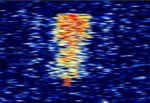 |
|
| GOES High Rate Information Transmission (HRIT) | GOES HRIT is a retransmission of satellite imagery and other information from the GOES-R series of satellites. | 1,694.1 MHzMegaHertz (MHz) 10^6 Hz | RAW | BPSKBinary Phase-Shift Keying (1 bit per symbol) | 1.205 MHzMegaHertz (MHz) 10^6 Hz | Worldwide | — | 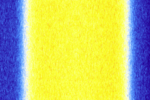 |
| GOES Rebroadcast (GRB) | GOES Rebroadcast (GRB) is a form of data sent from the GOES-R series of satellites that contain information from all of the instruments on board the GOES satellites | 1,681.6 MHzMegaHertz (MHz) 10^6 Hz — 1,686.6 MHzMegaHertz (MHz) 10^6 Hz | DVB-S2, RAW | QPSK16, 8PSK8-Phase Phase-Shift Keying (3 bits per symbol) | 10 MHzMegaHertz (MHz) 10^6 Hz | Worldwide |  |
|
| Gonets | Gonets (Russian Гонец, for Messenger) is a Russian civilian low Earth orbit communications satellite system. | 265 HzHertz (Hz), unit of frequency, defined as one cycle per second (1 Hz). — 388 MHzMegaHertz (MHz) 10^6 Hz | NFMNarrowband Frequency Modulation | GMSKGaussian Minimum-Shift Keying | 20 kHzKiloHertz (kHz) 10^3 Hz | Worldwide | 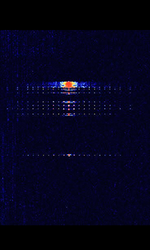 |
|
| HORYU-4 Telemetry | Telemetry signal sent from the HORYU-4 university-class satellite Launched by Kyushu Institute of Technology in Japan | 437.375 MHzMegaHertz (MHz) 10^6 Hz | USBUpper Side Band Modulation (Radio, referring to reception and modulation mode)Universal Serial Bus (Computer, referring to USB Ports and cables) | BPSKBinary Phase-Shift Keying (1 bit per symbol) | Worldwide | 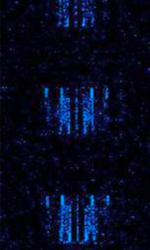 |
||
| High Resolution Data (HRD) | The HRD direct broadcast is an X-band continuous downlink from NOAA JPSS satellites of mission environmental data to users on the ground that are equipped with a suitable receiver. | 7,812 MHzMegaHertz (MHz) 10^6 Hz | RAW | OQPSK, QPSKQuadrature Phase-Shift Keying (2 bits per symbol) | 25 MHzMegaHertz (MHz) 10^6 Hz — 35 MHzMegaHertz (MHz) 10^6 Hz | Worldwide | — |  |
| ICARUS (International Cooperation for Animal Research Using Space) | ICARUS aims its services primarily at scientific groups that perform basic and application-oriented research with migrating animals. | 468.1 MHzMegaHertz (MHz) 10^6 Hz | NFMNarrowband Frequency Modulation | PSKPhase-Shift Keying | 32 kHzKiloHertz (kHz) 10^3 Hz | Worldwide |  |
|
| Inmarsat Aero | Inmarsat Aero is the protocol that's used to link ground stations with aircraft via Inmarsat's satellite link. This protocol carries digital voice, fax and low speed data such as ACARS and ADS-C. | 1,545 MHzMegaHertz (MHz) 10^6 Hz — 3,687 MHzMegaHertz (MHz) 10^6 Hz | USBUpper Side Band Modulation (Radio, referring to reception and modulation mode)Universal Serial Bus (Computer, referring to USB Ports and cables) | PSKPhase-Shift Keying | 800 HzHertz (Hz), unit of frequency, defined as one cycle per second (1 Hz). — 10.5 MHzMegaHertz (MHz) 10^6 Hz | Worldwide | 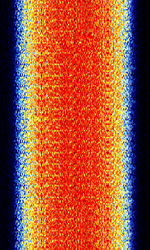 |
|
| Inmarsat IsatM2M | IsatM2M Service operated by Inmarsat on existing Inmarsat-D/D+ infrastructure. | 1,525 MHzMegaHertz (MHz) 10^6 Hz — 1,559 MHzMegaHertz (MHz) 10^6 Hz | USBUpper Side Band Modulation (Radio, referring to reception and modulation mode)Universal Serial Bus (Computer, referring to USB Ports and cables) | MFSKMultiple Frequency Shift-Keying | 1.024 kHzKiloHertz (kHz) 10^3 Hz | Worldwide |  |
|
| Inmarsat-C TDM | Inmarsat C provides two-way data and messaging communication services to and from virtually anywhere in the world. The low-cost terminals and antennas are small enough to be fitted to any size of ship. | 1,537.7 MHzMegaHertz (MHz) 10^6 Hz — 1,539.685 MHzMegaHertz (MHz) 10^6 Hz | USBUpper Side Band Modulation (Radio, referring to reception and modulation mode)Universal Serial Bus (Computer, referring to USB Ports and cables) | PSKPhase-Shift Keying | 2.5 kHzKiloHertz (kHz) 10^3 Hz | Worldwide | 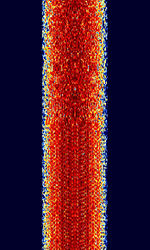 |
|
| Inmarsat-D(D+) Downlink | Inmarsat D+ (and it's predecessor, Inmarsat D) was Inmarsat's satellite paging system. The main use of the technology was in tracking trucks and buoys and SCADA applications. | 1,525 MHzMegaHertz (MHz) 10^6 Hz — 1,559 MHzMegaHertz (MHz) 10^6 Hz | USBUpper Side Band Modulation (Radio, referring to reception and modulation mode)Universal Serial Bus (Computer, referring to USB Ports and cables) | MFSKMultiple Frequency Shift-Keying | 640 HzHertz (Hz), unit of frequency, defined as one cycle per second (1 Hz). | Worldwide | 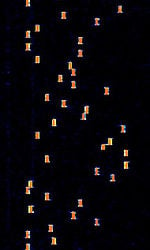 |
|
| Iridium | This is the L-band uplink/downlink for the Low Earth Orbit Iridium Satellite Constellation. This system is used for satellite based phone calls. | 1,616 MHzMegaHertz (MHz) 10^6 Hz — 1,626.5 MHzMegaHertz (MHz) 10^6 Hz | RAW | PSKPhase-Shift Keying | 31.5 kHzKiloHertz (kHz) 10^3 Hz | Worldwide |  |
|
| IsatData Pro | Inmarsat's M2M data service for SCADA asset tracking and reporting. | 1,525 MHzMegaHertz (MHz) 10^6 Hz — 1,559 MHzMegaHertz (MHz) 10^6 Hz | OQPSK | Worldwide | — |  |
||
| LEOSAR Downlink | Cospas-Sarsat downlink from polar-orbiting weather satellites. The International Cospas-Sarsat Programme is a satellite-aided search and rescue initiative. | 1,544.5 MHzMegaHertz (MHz) 10^6 Hz | NFMNarrowband Frequency Modulation | PSKPhase-Shift Keying | 350 kHzKiloHertz (kHz) 10^3 Hz | Worldwide | 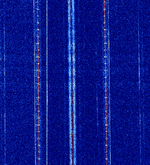 |
|
| Low Rate Picture Transmission (LRPT) | The Low Rate Picture Transmission (LRPT) is a digital transmission system, commonly transmitted by METEOR-M satellites, used to deliver weather images and data. | 137 MHzMegaHertz (MHz) 10^6 Hz — 138 MHzMegaHertz (MHz) 10^6 Hz | RAW | QPSKQuadrature Phase-Shift Keying (2 bits per symbol) | 120 kHzKiloHertz (kHz) 10^3 Hz | Worldwide | — | 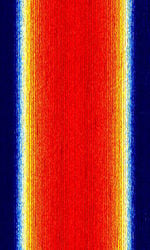 |
| METEOR-M High Resolution Picture Transmission (HRPT) | A variant of the NOAA HRPT signal, which has a different data structure and better low-signal handling characteristics. | 1,700 MHzMegaHertz (MHz) 10^6 Hz | RAW | PSKPhase-Shift Keying | 3 MHzMegaHertz (MHz) 10^6 Hz | Worldwide | — |  |
| METOP Advanced High Resolution Picture Transmission (AHRPT) | A high-speed digital link used by METOP weather satellites for direct data dissemination. | 1,701.3 MHzMegaHertz (MHz) 10^6 Hz — 1,707 MHzMegaHertz (MHz) 10^6 Hz | RAW | QPSKQuadrature Phase-Shift Keying (2 bits per symbol) | 6 MHzMegaHertz (MHz) 10^6 Hz | Worldwide | — |  |
| MONITOR-2(RS39S) | Monitor-2 is a Russian 3u Cubesat used for cosmic flare observation. It is most likely only active when above Russia. | 435.815 MHzMegaHertz (MHz) 10^6 Hz | FMFrequency Modulation | AFSKAudio Frequency-Shift Keying | 12.5 kHzKiloHertz (kHz) 10^3 Hz | Worldwide | 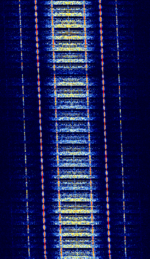 |
|
| Meteosat WEFAX | Meteosat WEFAX is a WEFAX used to transmit satellite images via Meteosat Satellites. WEFAX was introduced with the first Meteosat in 1977. | 1,691 MHzMegaHertz (MHz) 10^6 Hz | FMFrequency Modulation | AMAmplitude Modulation, FMFrequency Modulation | Worldwide |  |
||
| Milstar | UHFUltra High Frequency (300-3000 MHz) FHSS Downlink of Milstar, a US joint military service satellite communications system that provides secure, jam resistant, worldwide communications. Nicknamed 'Waterdroplets' for it's characteristic waveform and sound. | 243.785 MHzMegaHertz (MHz) 10^6 Hz — 243.822 MHzMegaHertz (MHz) 10^6 Hz | RAW | FHSS | 50 kHzKiloHertz (kHz) 10^3 Hz | Worldwide |  |
|
| NOAA Direct Sounder Broadcast (DSB) | The Direct Sounder Broadcast (DSBDual Side Band Modulation) is an auxiliary telemetry downlink from NOAA Polar Operational Environmental Satellites (POES), transmitted alongside Automatic Picture Transmission (APT) broadcasts. | 137.35 MHzMegaHertz (MHz) 10^6 Hz — 137.77 MHzMegaHertz (MHz) 10^6 Hz | NFMNarrowband Frequency Modulation | PSKPhase-Shift Keying | 33.5 kHzKiloHertz (kHz) 10^3 Hz | Worldwide | 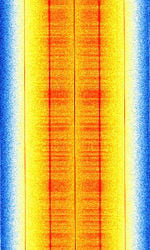 |
|
| NOAA ITOS High Resolution Picture Transmission (HRPT) | An analog signal broadcast from NOAA ITOS polar satellites that transmitted images from the VHRR radiometer. | 1,697.5 MHzMegaHertz (MHz) 10^6 Hz | WFMWideband Frequency Modulation | FMFrequency Modulation | 1 MHzMegaHertz (MHz) 10^6 Hz | Worldwide | 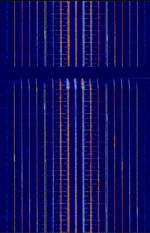 |
|
| NOAA POES High Resolution Picture Transmission (HRPT) | A digital link to transmit images and other data collected from the satellite at a high resolution. | 1,698 MHzMegaHertz (MHz) 10^6 Hz — 2,247.5 MHzMegaHertz (MHz) 10^6 Hz | RAW | PSKPhase-Shift Keying | 3 MHzMegaHertz (MHz) 10^6 Hz | Worldwide | — |  |
| OTP-2 Satellite Musical Beacon | Musical transmission originating from the OTP-2 Cubesat | 400.502 MHzMegaHertz (MHz) 10^6 Hz | NFMNarrowband Frequency Modulation | FSKFrequency-Shift Keying | 4.2 kHzKiloHertz (kHz) 10^3 Hz | Worldwide | 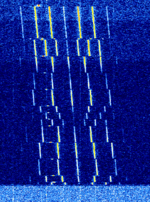 |
|
| OrbComm Mobile Telephony | Orbcomm digitized mobile satellite-based telephone signal intercepted over Hawaii, preceding NOAA 19 pass. | 137.2 MHzMegaHertz (MHz) 10^6 Hz — 137.46 MHzMegaHertz (MHz) 10^6 Hz | NFMNarrowband Frequency Modulation | 15 kHzKiloHertz (kHz) 10^3 Hz | Worldwide | 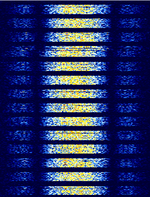 |
||
| Orbcomm | Orbcomm satellites are used for monitoring and sending short text messages. | 137 MHzMegaHertz (MHz) 10^6 Hz — 150 MHzMegaHertz (MHz) 10^6 Hz | NFMNarrowband Frequency Modulation | SDPSK | 15 kHzKiloHertz (kHz) 10^3 Hz | Worldwide | 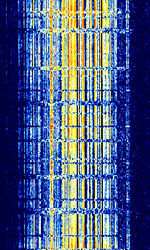 |
|
| PROBA 1/2 Downlink | Dump of satellite data to Redu, Belgium ground station from the PROBA (Project for On-Board Autonomy) 1, 2, and V ESA satellites. | 2,235 MHzMegaHertz (MHz) 10^6 Hz | RAW | BPSKBinary Phase-Shift Keying (1 bit per symbol) | 4 MHzMegaHertz (MHz) 10^6 Hz | Europe | — |  |
| QO-100-modem | High speed modem for QO-100 (Es'hail 2) amateur satellite narrow transponder. | 10,489.5 MHzMegaHertz (MHz) 10^6 Hz — 10,490 MHzMegaHertz (MHz) 10^6 Hz | USBUpper Side Band Modulation (Radio, referring to reception and modulation mode)Universal Serial Bus (Computer, referring to USB Ports and cables) | QPSKQuadrature Phase-Shift Keying (2 bits per symbol), BPSKBinary Phase-Shift Keying (1 bit per symbol), APSK | 2.7 kHzKiloHertz (kHz) 10^3 Hz | 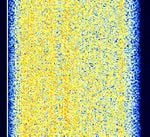 |
||
| Radio Navigation Satellite System (RNSS) | Generic positioning, navigation, and timing (PNT) signals transmitted by global/regional navigation satellite system (GNSS/RNSS) and Satellite-Based Augmentation System (SBAS) constellations such as GPS, GLONASS, Galileo, BeiDou, QZSS, and IRNSS. | 1,176.45 MHzMegaHertz (MHz) 10^6 Hz — 1,575.42 MHzMegaHertz (MHz) 10^6 Hz | RAW | BPSKBinary Phase-Shift Keying (1 bit per symbol), QAMQuadrature Amplitude Modulation, DSSS, BOC, TMBOC | 22 MHzMegaHertz (MHz) 10^6 Hz — 25 MHzMegaHertz (MHz) 10^6 Hz | Worldwide |  |
|
| SECOR 4 (EGRS 4) | SECOR 4 (COSPAR ID: 1965-027B) was a SEquential COllation of Range series satellite, and is occasionally active when receiving adequate solar power on it's panels. It is not consistent, likely owing to a tumbling or rotating motion. | 136.845 MHzMegaHertz (MHz) 10^6 Hz | USBUpper Side Band Modulation (Radio, referring to reception and modulation mode)Universal Serial Bus (Computer, referring to USB Ports and cables) | IRIG | 2 kHzKiloHertz (kHz) 10^3 Hz | 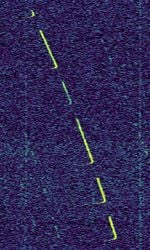 |
||
| SOLRAD 7B (COSPAR ID: 1965-016D) | SOLRAD-7B is one of the many "zombie satellites" in orbit and is an artifact of the mid 1960's US space program. It occasionally will become active again when illuminated by sunlight due to the satellite bus having several small, semi-circular solar panels. | 136 HzHertz (Hz), unit of frequency, defined as one cycle per second (1 Hz). — 136.806 MHzMegaHertz (MHz) 10^6 Hz | USBUpper Side Band Modulation (Radio, referring to reception and modulation mode)Universal Serial Bus (Computer, referring to USB Ports and cables) | AMAmplitude Modulation IRIG | 6 kHzKiloHertz (kHz) 10^3 Hz | 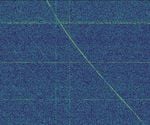 |
||
| SiriusXM Satellite Radio | SiriusXM Satellite Radio: Terrestrial Repeater Signal | 2,332.5 MHzMegaHertz (MHz) 10^6 Hz — 2,345 MHzMegaHertz (MHz) 10^6 Hz | RAW | OFDMOrthogonal Frequency-Division Multiplexing, PSKPhase-Shift Keying | 12.5 MHzMegaHertz (MHz) 10^6 Hz | United States |  |
|
| Transit 5B-5 | Transit 5B-5, a former TRANSIT navigation satellite, is the oldest satellite known to still transmit a signal. Considered "dead" because its navigational systems failed after 19 days of operation, it still emits a telemetry signal when illuminated. | 136.658 MHzMegaHertz (MHz) 10^6 Hz | WFMWideband Frequency Modulation | PCM, PAMPulse Amplitude Modulation, FMFrequency Modulation, PM | 32 kHzKiloHertz (kHz) 10^3 Hz | Worldwide | 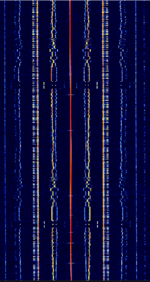 |
Pages in category "Satellite"
The following 56 pages are in this category, out of 56 total.